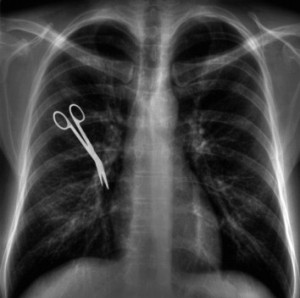St. Joseph’s London Hospital has notified the state that it will no longer perform coronary artery bypass graft surgery (CABG), the traditional open-chest cardio-thoracic surgical procedure used to restore blood flow to the heart of people with severe coronary artery atherosclerosis. Before the advent of the the less invasive angioplasty and stenting, CABG was the main surgical approach to re-vascularization of a diseased heart. For certain combinations of coronary artery disease, and in some clinical settings, CABG remains the preferred approach today.
Why fewer invasive procedures?
In Kentucky, the frequency of both angioplasty and CABG have been gradually decreasing, presumably because the effectiveness of aggressive medical therapy is better recognized, and because research showed that the invasive approaches were being used in circumstances where they offered no advantage over non-invasive treatment. Treatment of coronary artery disease is lucrative for hospitals and physicians alike which unfortunately caused some to stretch the envelope beyond what could be justified medically, even to the point of fraud. That bubble is bursting and accounts for a some if not much of the overall decrease in invasive procedures.
Where will patients go?
The new plan in London is to transfer those patients requiring emergency surgery to one of the nearer hospitals capable of treating such a patient, presumably Pikeville, Hazard, Corbin, Asheville, Summerset, or Lexington. (Some of these hospitals perform fewer CABGs than in London!) For non-emergency surgery, patients will be referred to another KentuckyOne hospital– St. Joseph’s Lexington. Angioplasty and stenting will continue to be performed at St. Joseph’s London presumably with safeguards in place to make sure that the most appropriate procedure will be offered for medical reasons and not for convenience. Continue reading “St. Joseph’s London Discontinues Coronary Artery Bypass Surgery.”


